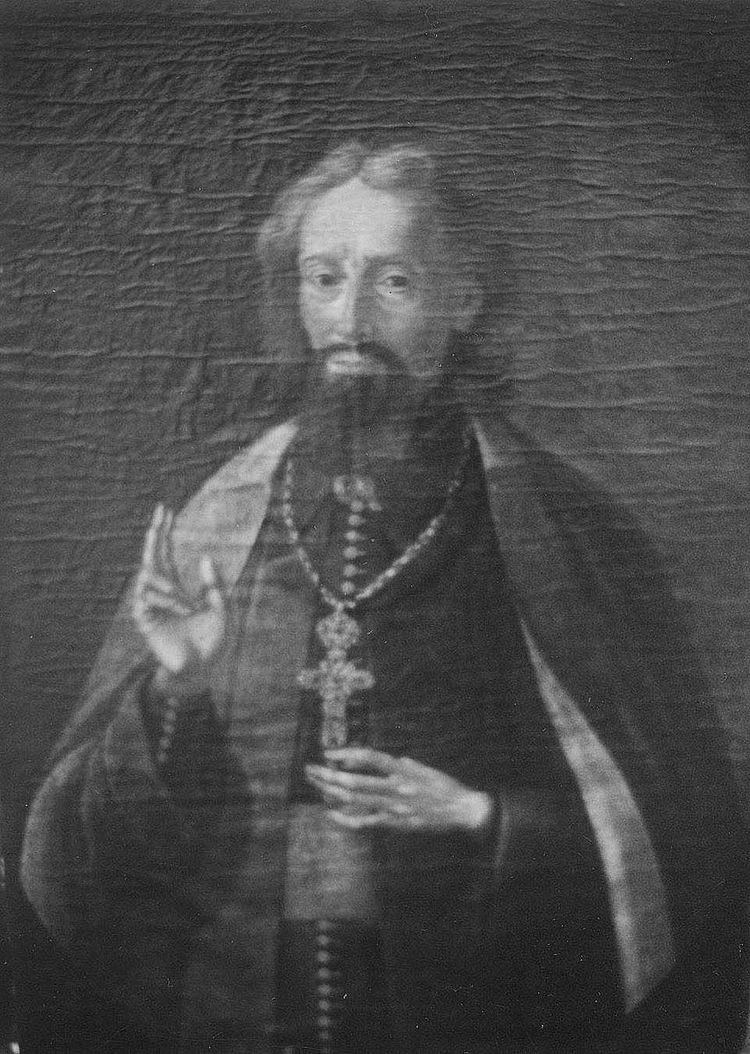Birth name Mykhailo Isid Died November 5, 1767 Ordination 1725 (Priesthood) Term ended November 5, 1767 | Name Manuil Olsavszky Consecration December 9, 1743 Appointed September 5, 1743 | |
 | ||
Diocese Ruthenian Catholic Eparchy of Mukacheve | ||
Manuil Mykhaylo Olshavskyi, O.S.B.M. (born as Michal Židik; Ukrainian: Мануїл Михайло Ольшавський, Hungarian: Manó Mihály Olsavszky, Slovak: Manuel Michal Olšavsky, c. 1700 – 5 November 1767) was the bishop of the Vicariate Apostolic for the Ruthenians in Mukacheve from 1743 to his death in 1767.
Life

Mykhaylo Olshavskyi was born on about 1700 in the village of Oľšavica, from which he took his surname (which originally was Židik). He studied philosophy in Košice and than in the Jesuit college of Trnava. At the end of his studies, he was ordained secular priest in 1725 and assigned to the Eparchy of Mukacheve, where he later became vicar of the eparchs (bishops) Stefan Olshavskyi (who was his older brother) and Havryil Blazhovskyi.
At the death of his predecessor, he was appointed, on 8 February 1743 as general vicar by the Latin bishop of Eger: actually at that time, following the Union of Uzhhorod, the eparch of Mukacheve was formally an apostolic vicar of such Latin diocese. In a few months he was elected to such position by the clergy, designated by the Empress Maria Theresa and so confirmed by Pope Benedict XIV on 5 September 1743. He received the titular see of Rhosus and was consecrated bishop on 9 December 1743 by the bishop of Făgăraş, Inocenţiu Micu-Klein. A few time before consecration, Mykhaylo Olshavskyi entered in the Order of Saint Basil the Great and took the religious name of Manuil.
In 1746 Manuil Olshavskyi was requested by Empress Maria Theresa to undertake a pastoral visit in Transylvania that was at the time without Byzantine bishop due to the exile of Micu-Klein. He again returned in Transylvania in 1761 to cross, with his authority and predication, the disturbance of the Orthodox monk Sofronie.
In 1756 he complete and consecrated the sanctuary of Máriapócs which was started by his predecessor Gennadius Bizanczy. To serve sanctuary, he built a monastery and assigned it to the Basilian monks. He also buily schools in Mukachevo and in Máriapócs for the instruction of the clergy, and succeeded to obtain the necessary economical grants. While his predecessors in Mukachevo lived in the Saint Nicholas Monastery, on request of the monks he built an episcopal residence in downtown. In 1764 he built, with his own money, a school of theology and one for cantors in Mukachevo.
In 1759 he could write to Propaganda Fide that in his eparchy remained no Byzantine faithfuls who were not in communion with the Catholic Church. However the jurisdictional situation of his eparchy, formally an apostolic vicariate under the Latin bishop of Eger, was not satisfactory. So Manuil Olshavskyi contested the authority of the Bishop of Eger and tried to persuade Empress Maria Theresa to give full independence to the eparchy. He could not see the results of his work, but four years after his death, in 1771, the Eparchy of Mukacheve got its independence.
Manuil Olshavskyi died in Mukachevo on 5 November 1767, and he was buried in the sanctuary of Máriapócs.
Among his works, we can remember his Sermon et orientale de Sacra eccidentalem inter Unione quo ecclesia episcopus Rossensis.
